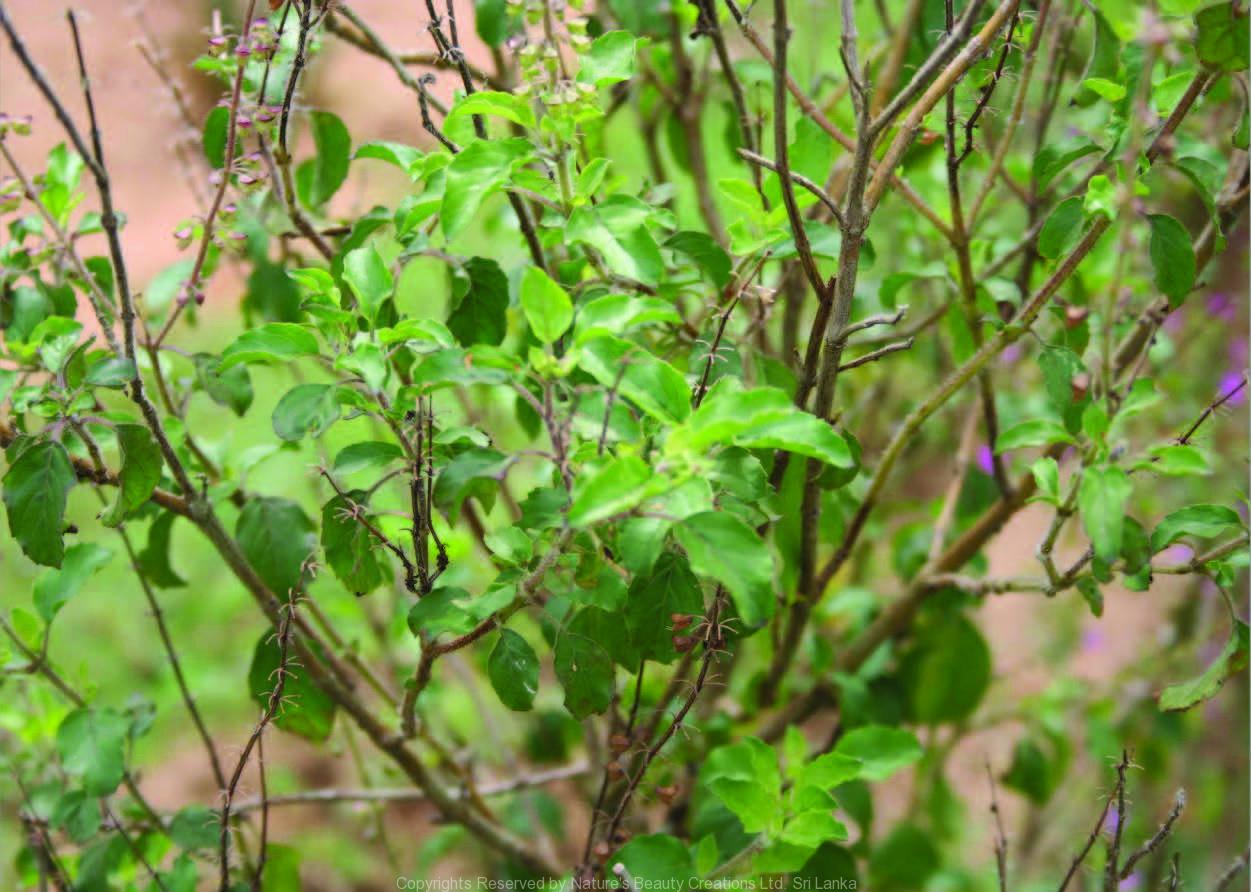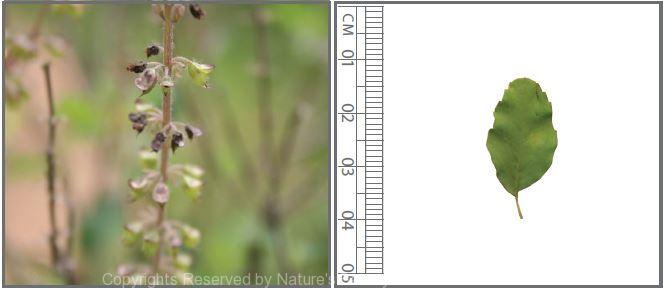

Traditional Knowledge
Useful plant parts :
Root, leaf and seed
Uses in traditional medicine :
- Infusion of the roots is prescribed for gastric disorders
- Herbal tea prepared of dried leaves is taken for cough and cold
- One table spoon of fresh leaf juice is taken to improve digestion and appetite
- Seeds are used for disorders of the genitourinary tract
- Fresh leaves and roots are used for stings of bees, wasps, mosquitoes and leeches
- It acts as an aromatic, stomachic, carminative and a cardiac stimulant
Scientific Research
Chemical constituents:
Flavonoids: orientin and vicenin from leaves; phenolic compounds: eugenol, eugenal, methyl chavicol, limatrol terpenes: caryophylline, carvacrol from essential oil of leaves
Bioactivity :
Powdered dried leaves: chemopreventive and supress azoxymethane induced colon tumours; fresh leaves: hypoglycaemic; hydroalcoholic extract of leaves: antioxidative
Clinical:
Treatment with leaves in patients with type 2 diabetes, lowers fasting and postprandial blood glucose levels
References : Agrawal, P. et al., (1996), Randomized placebo-controlled, single blind trial of holy basil leaves in patients with noninsulin-dependent diabetes mellitus, Int J Clin Pharmacol Ther, 34(9), 406-9. Gajula, D. et al., (2009), Determination of total phenolics, flavonoids and antioxidant and chemopreventive potential of basil (Ocimum basilicum L. and Ocimum tenuiflorum L.), International Journal of Cancer Research, 5(4), 130-143. Gajula, D. et al., (2010), Basil (Ocimum basilium and Ocimum tenuiflorum) Reduces Azoxymethane induced colon tumers in Fisher 344 male rats, Research Journal of Phytochemistry, 1, 1-10. Kath, R. K. and Gupta, R. K., (2006), Antioxidant activity of hydroalco- holic leaf extract of Ocimum sanctum in animal models of peptic ulcer, Indian Journal of Physiology and Pharmacology, 50(4), 391–396. Mondal, S. et al., (2009), The science behind sacredness of Tulsi (Ocimum sanctum Linn.), Indian Journal of Physiology and Pharmacol- ogy, 53(4), 291–306. Prakash, P. and Gupta, N., (2005), Therapeutic uses of ocimum sanctum Linn (Tulsi) with a note on eugenol and its pharmacological actions: a short review, Indian Journal of Physiology and Pharmacology, 49(2), 125–131. Rai, V. et al., (2004), Effect of chromium accumulation on photosynthetic pigments, oxidative stress defense system, nitrate reduction, proline level and eugenol content of Ocimum tenuiflorum L., Plant Science, 167, 1159–1169.
Copyrights Reserved By
Natures Beauty Creations




